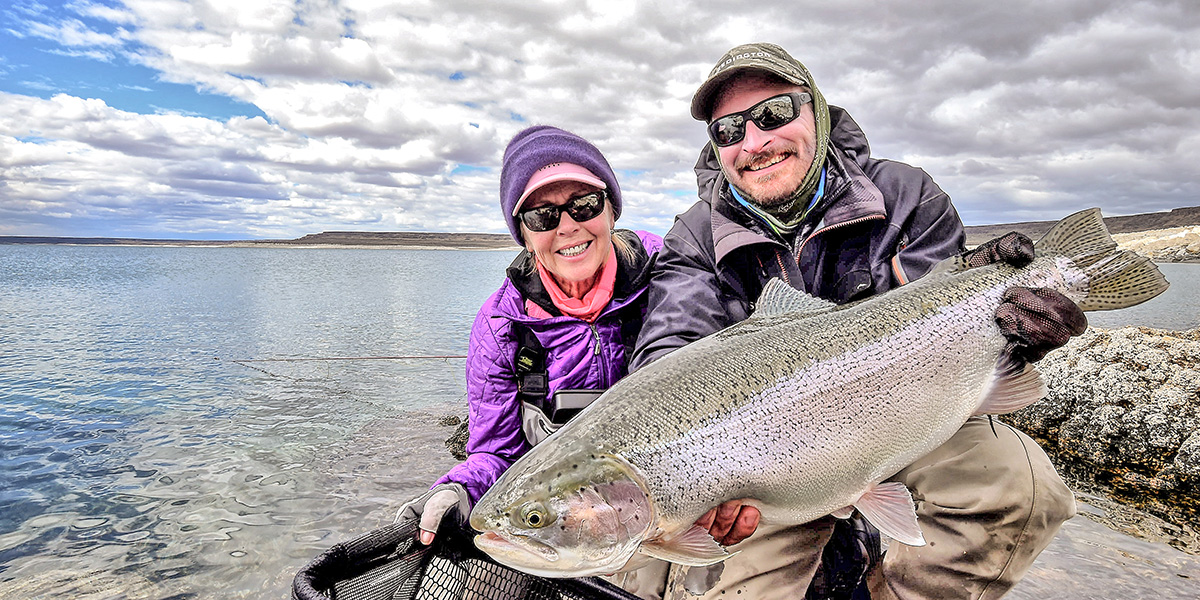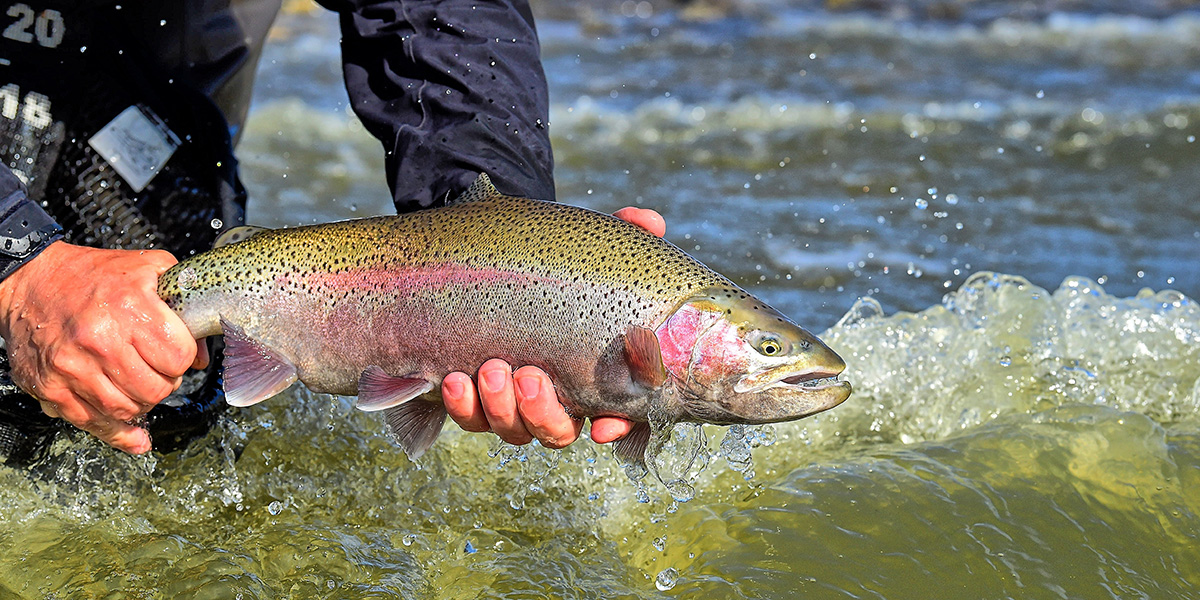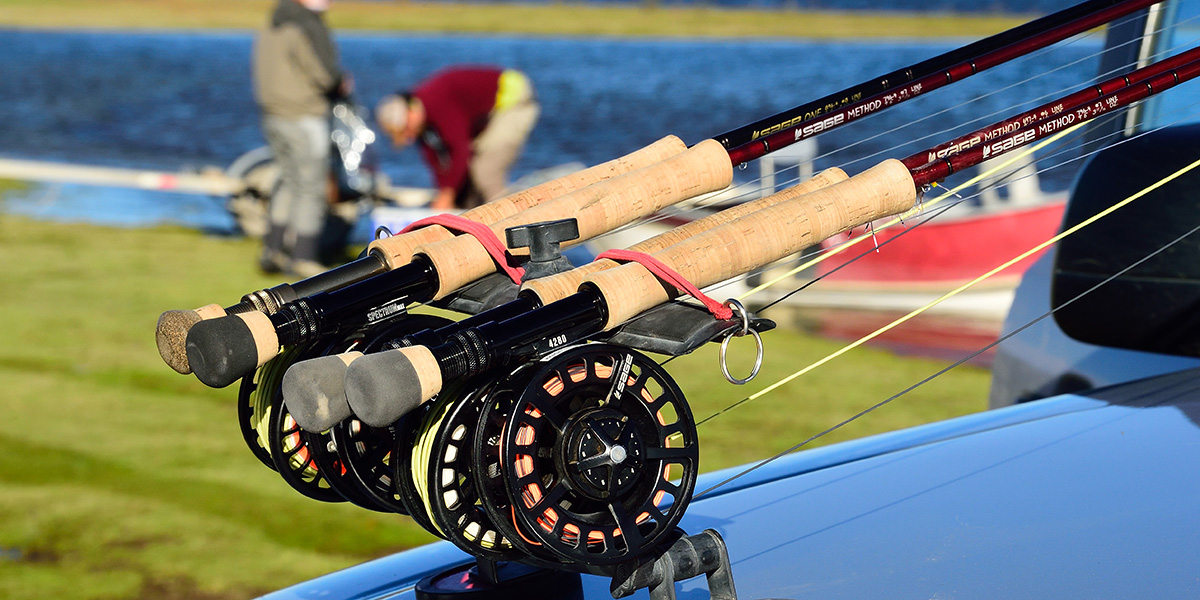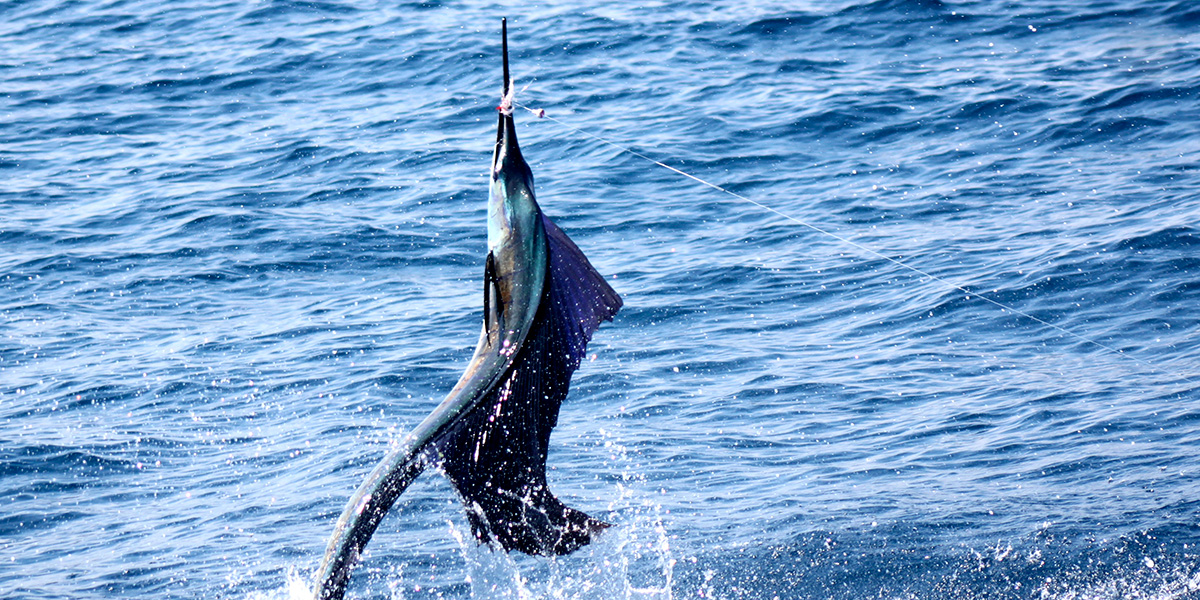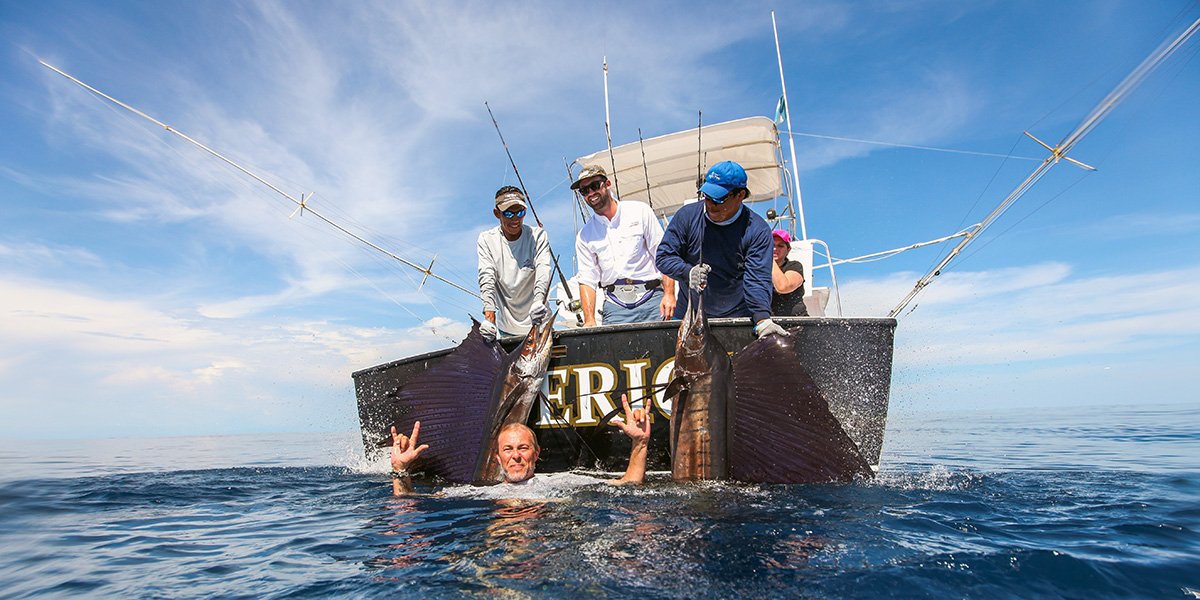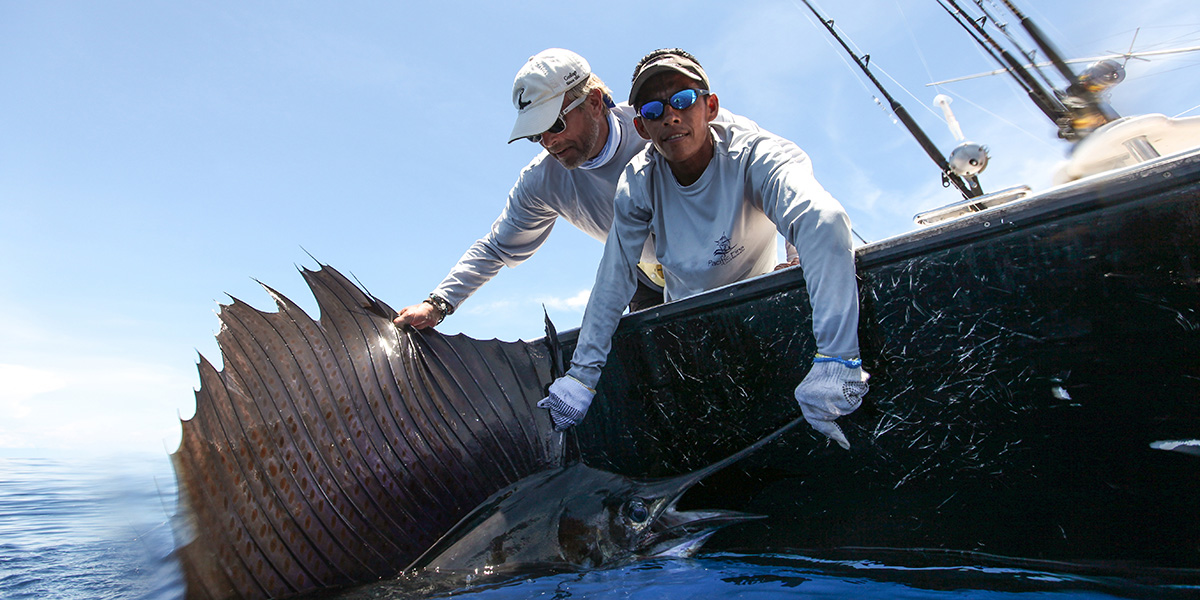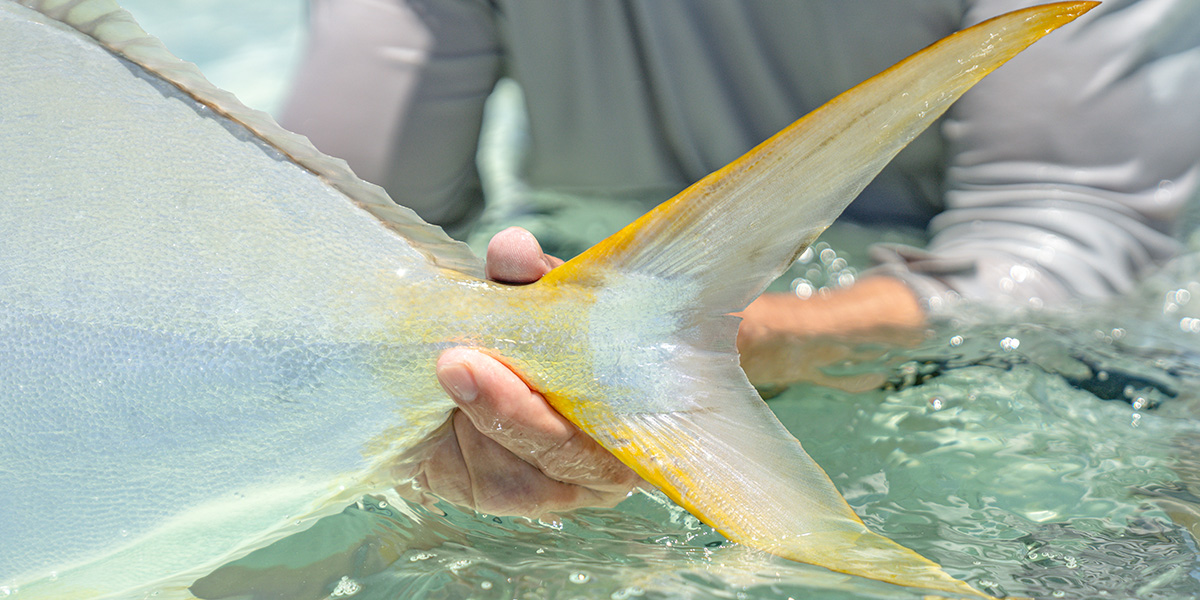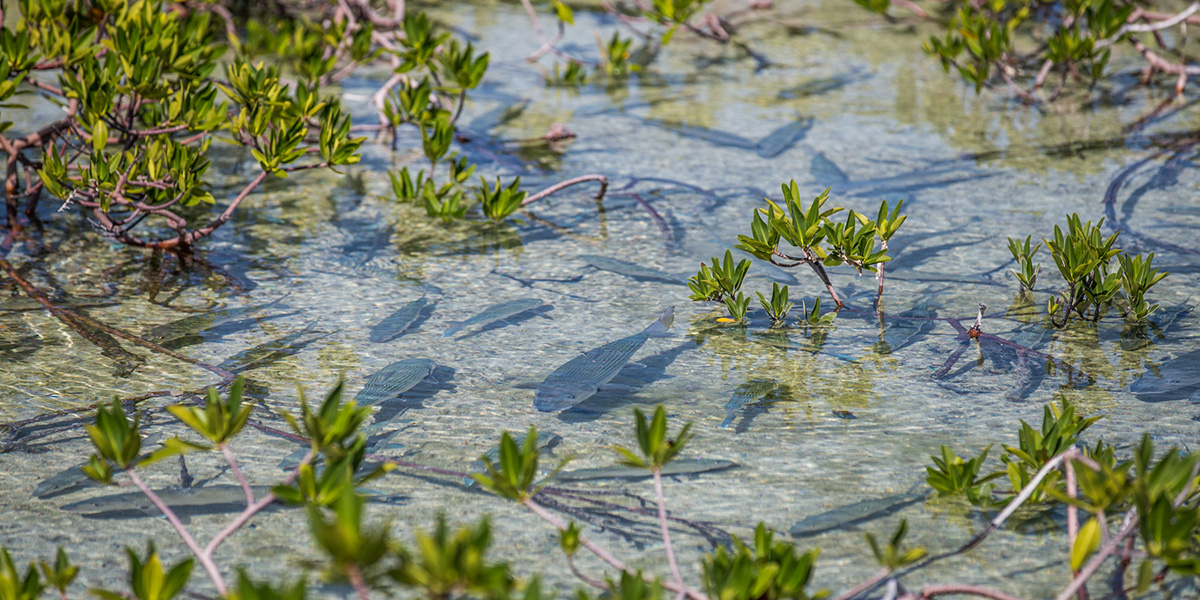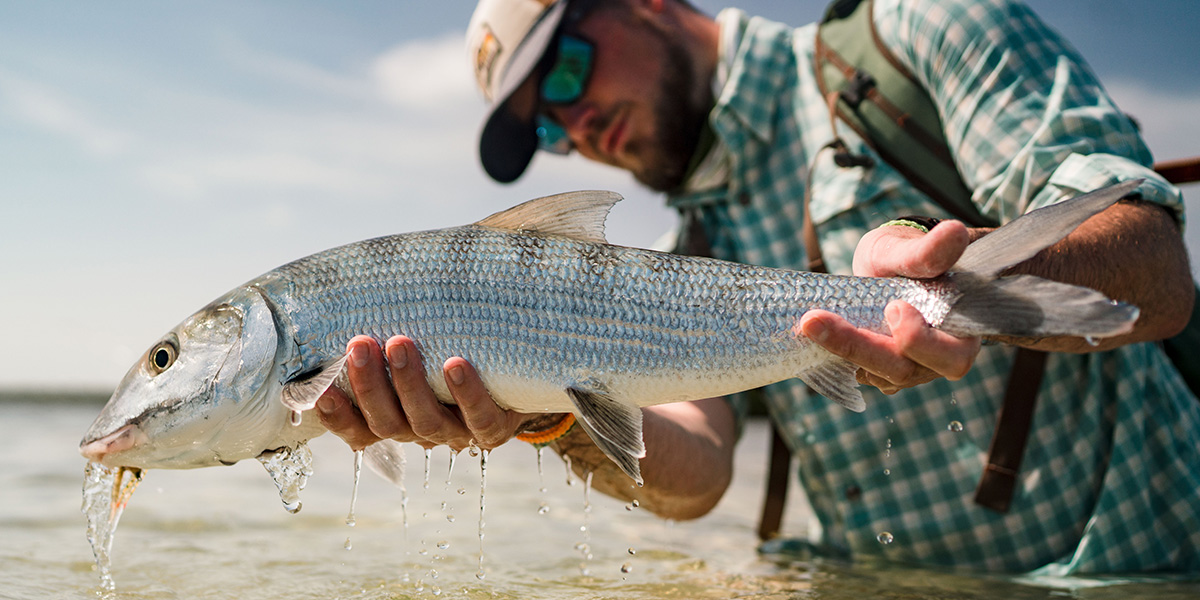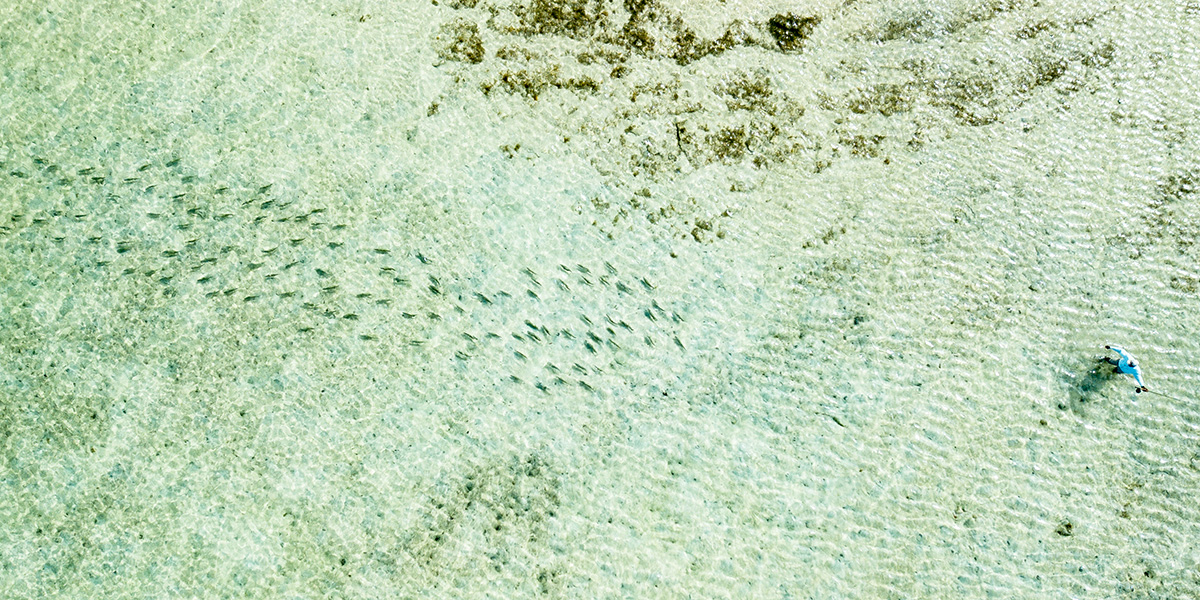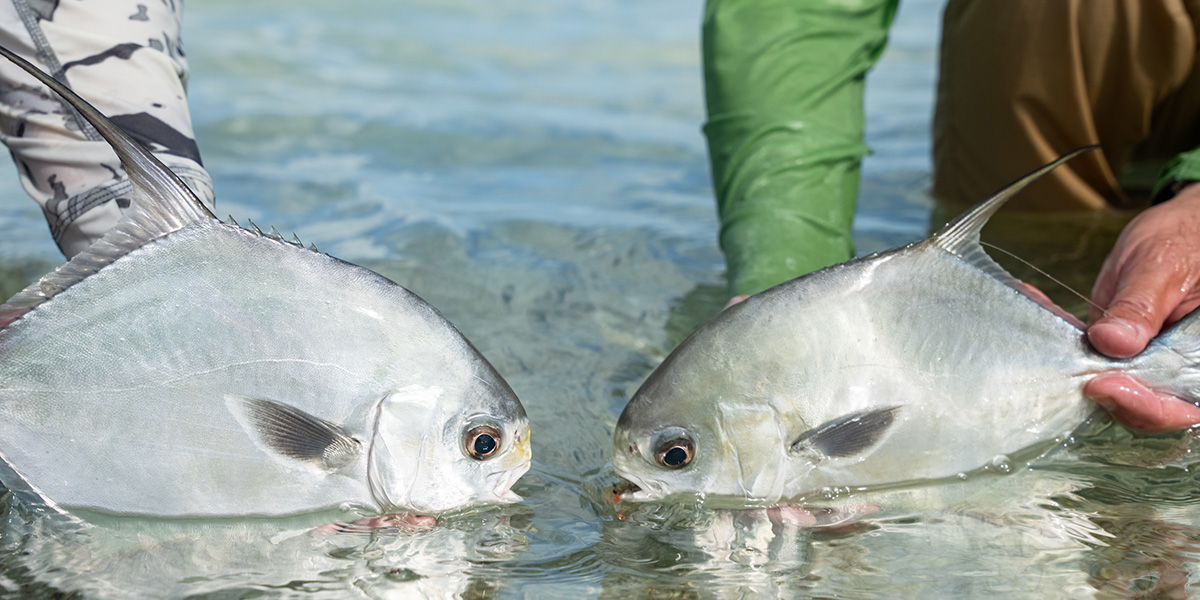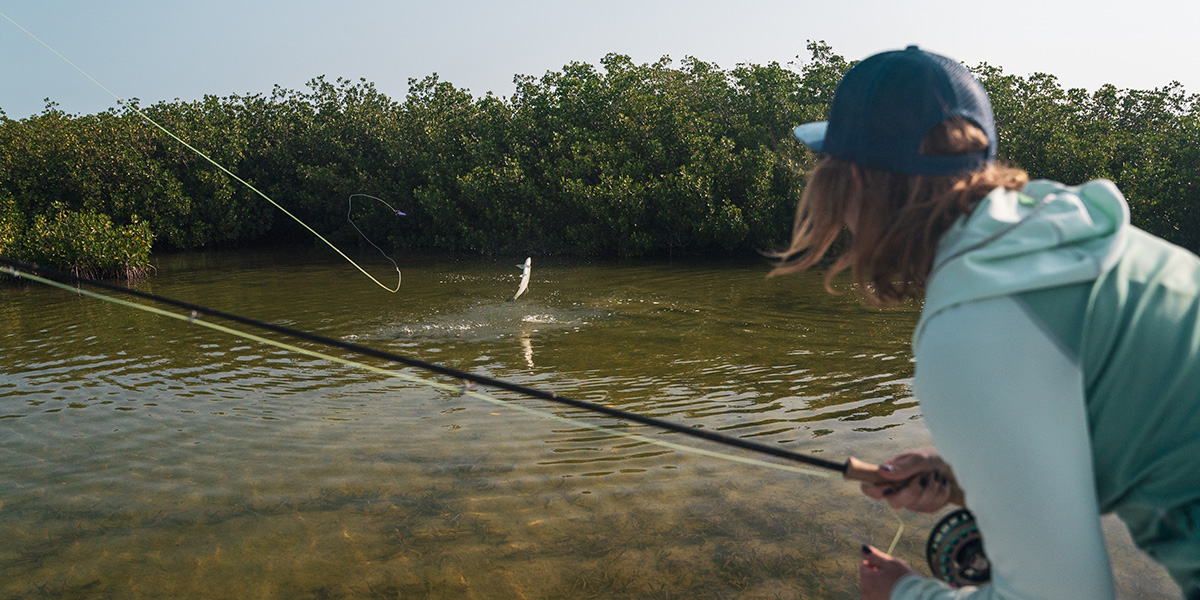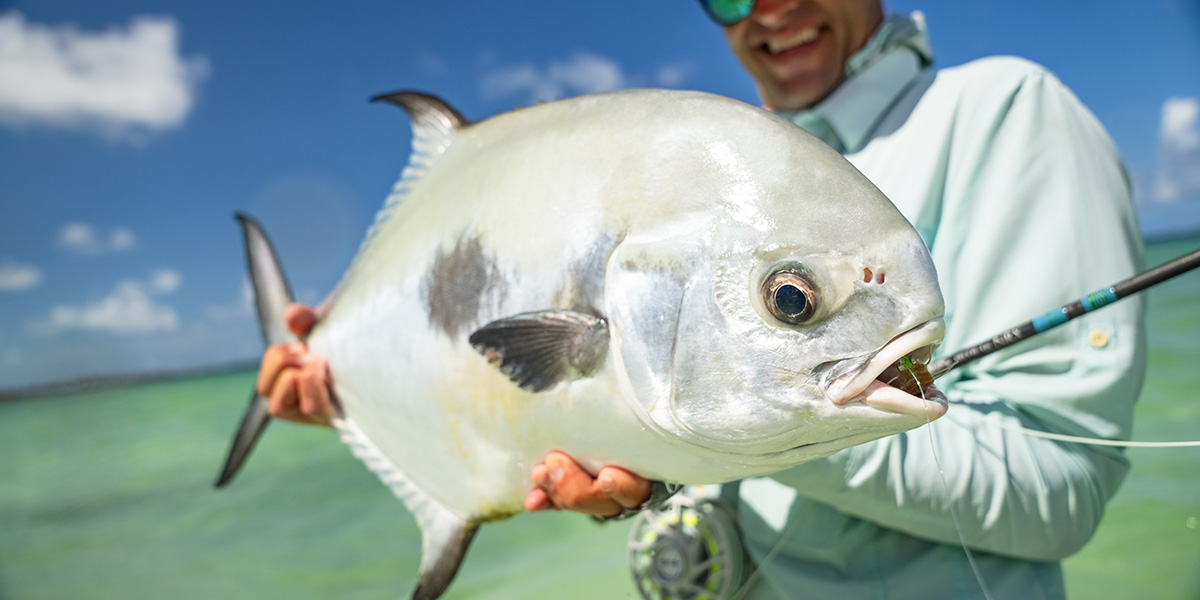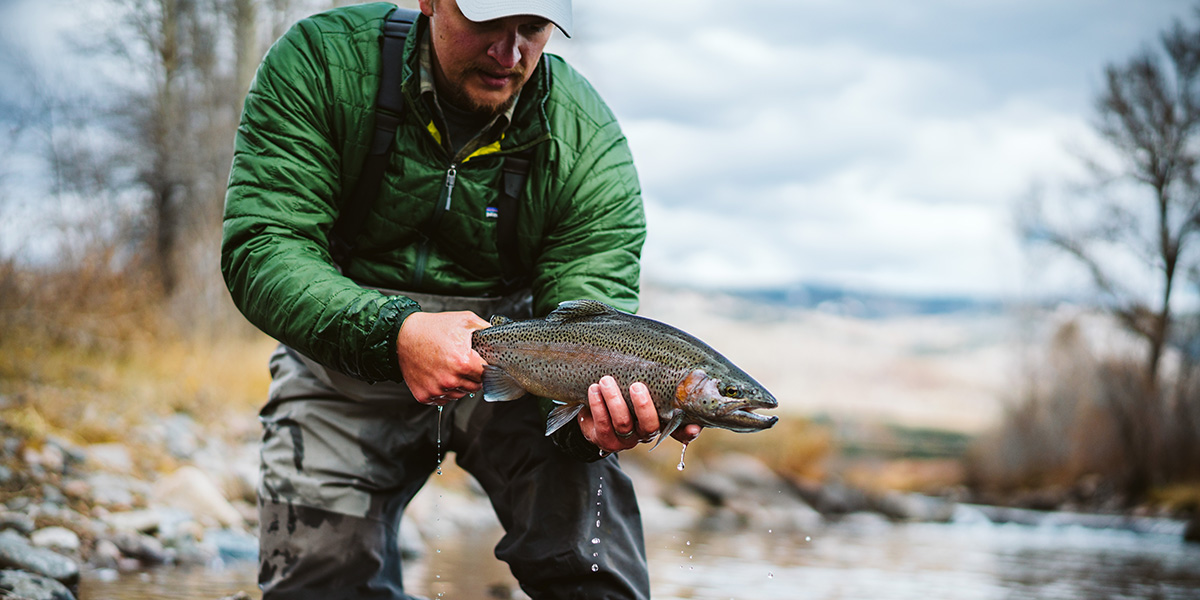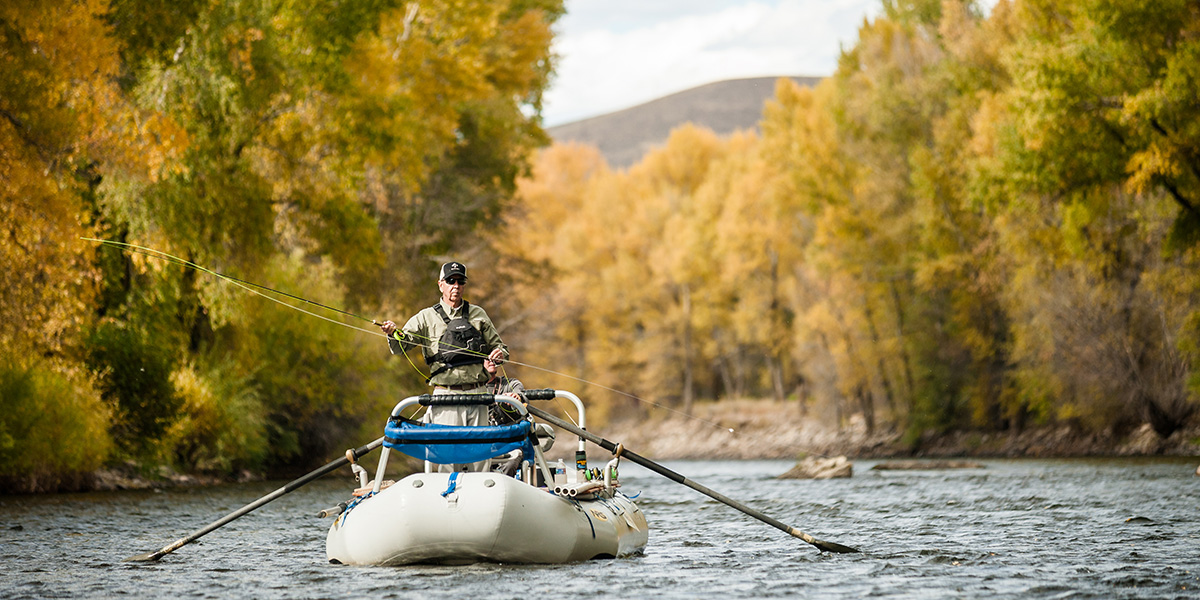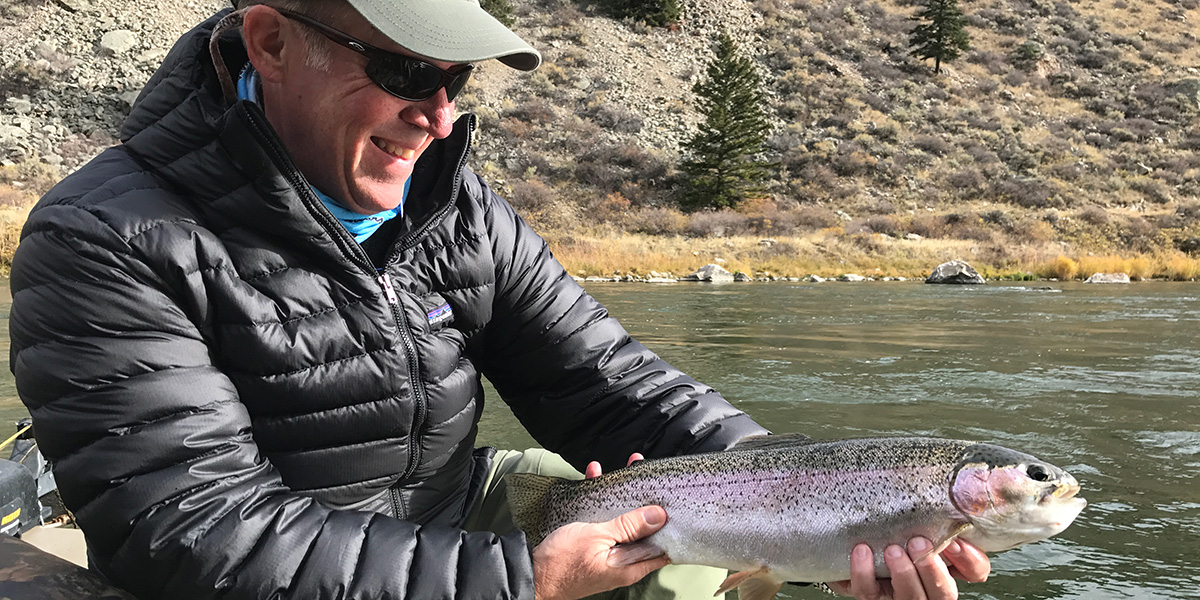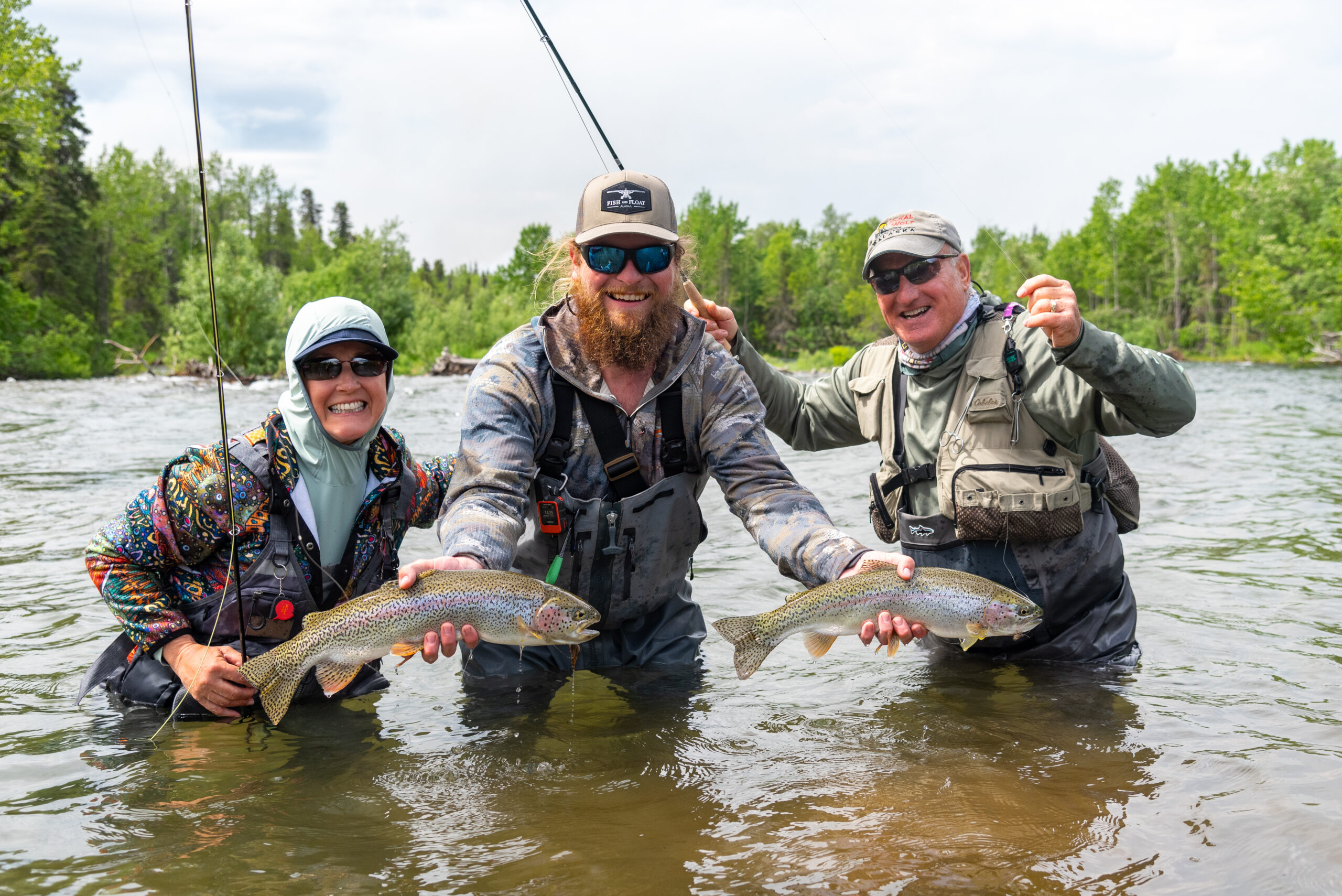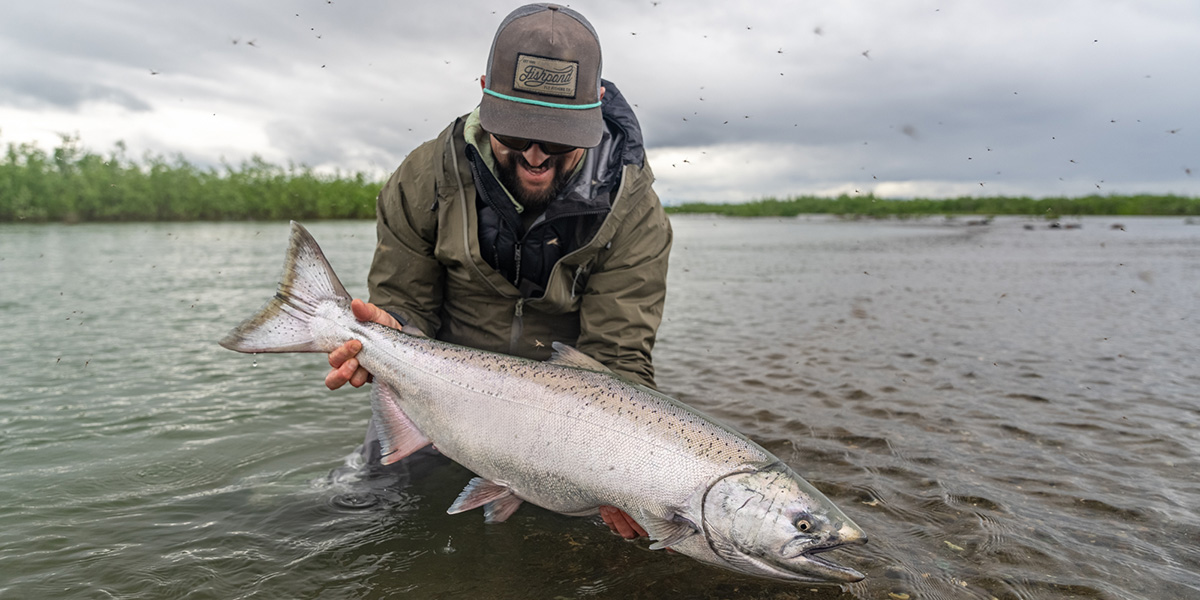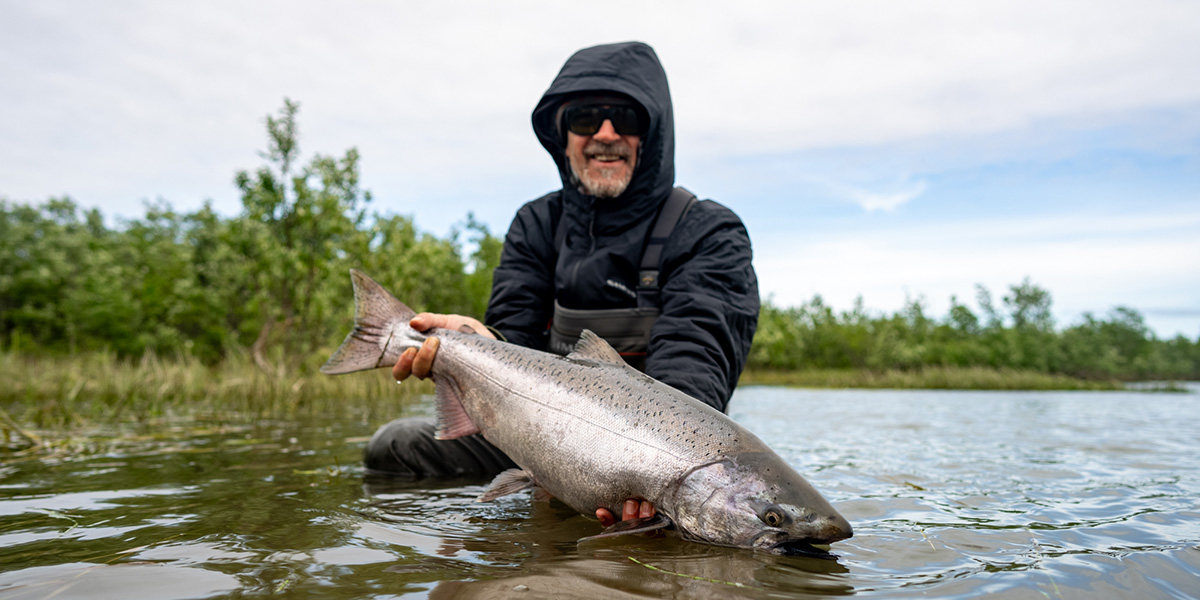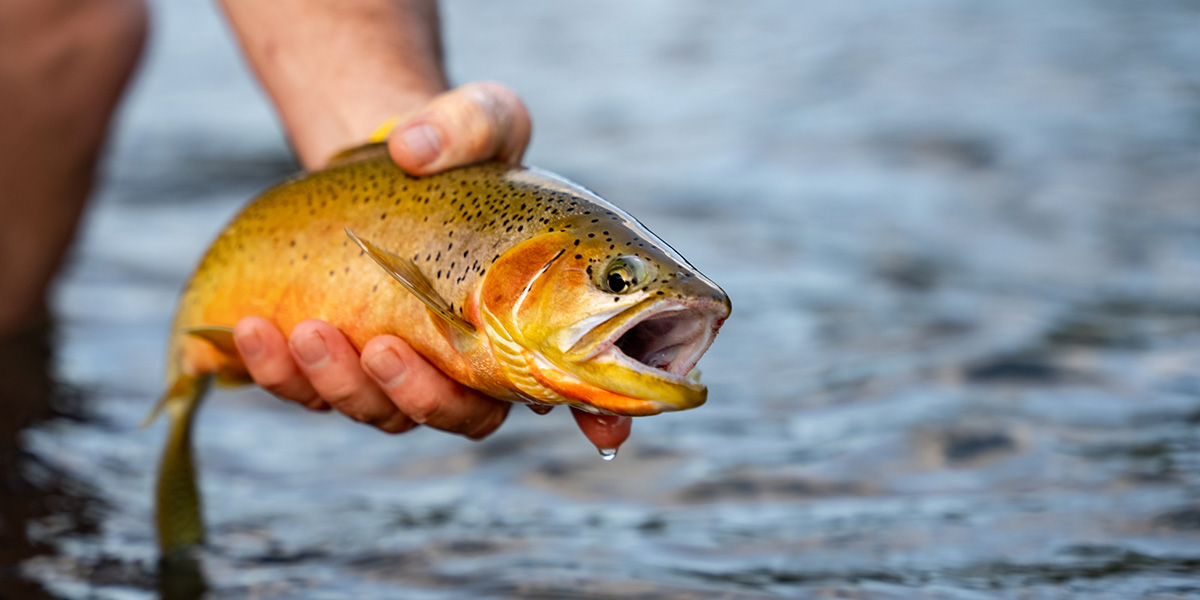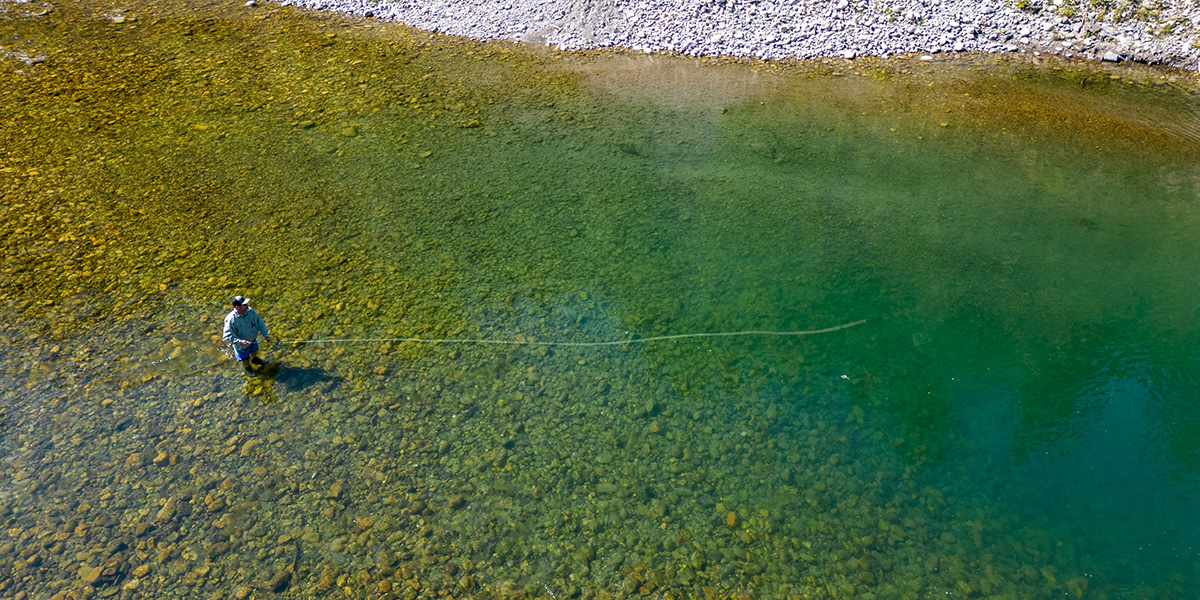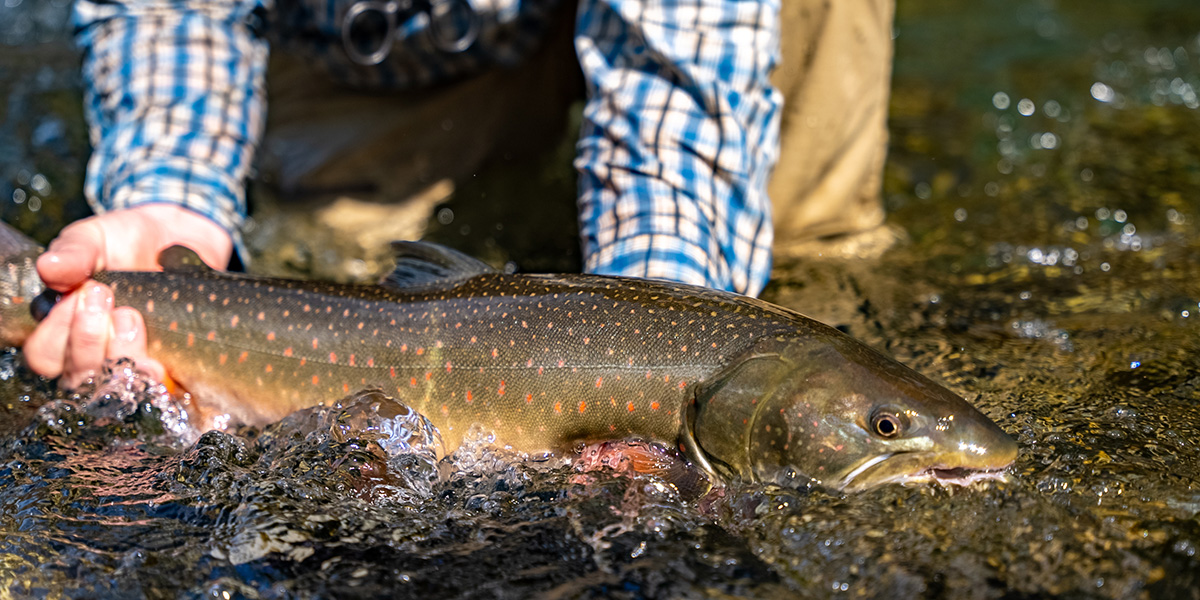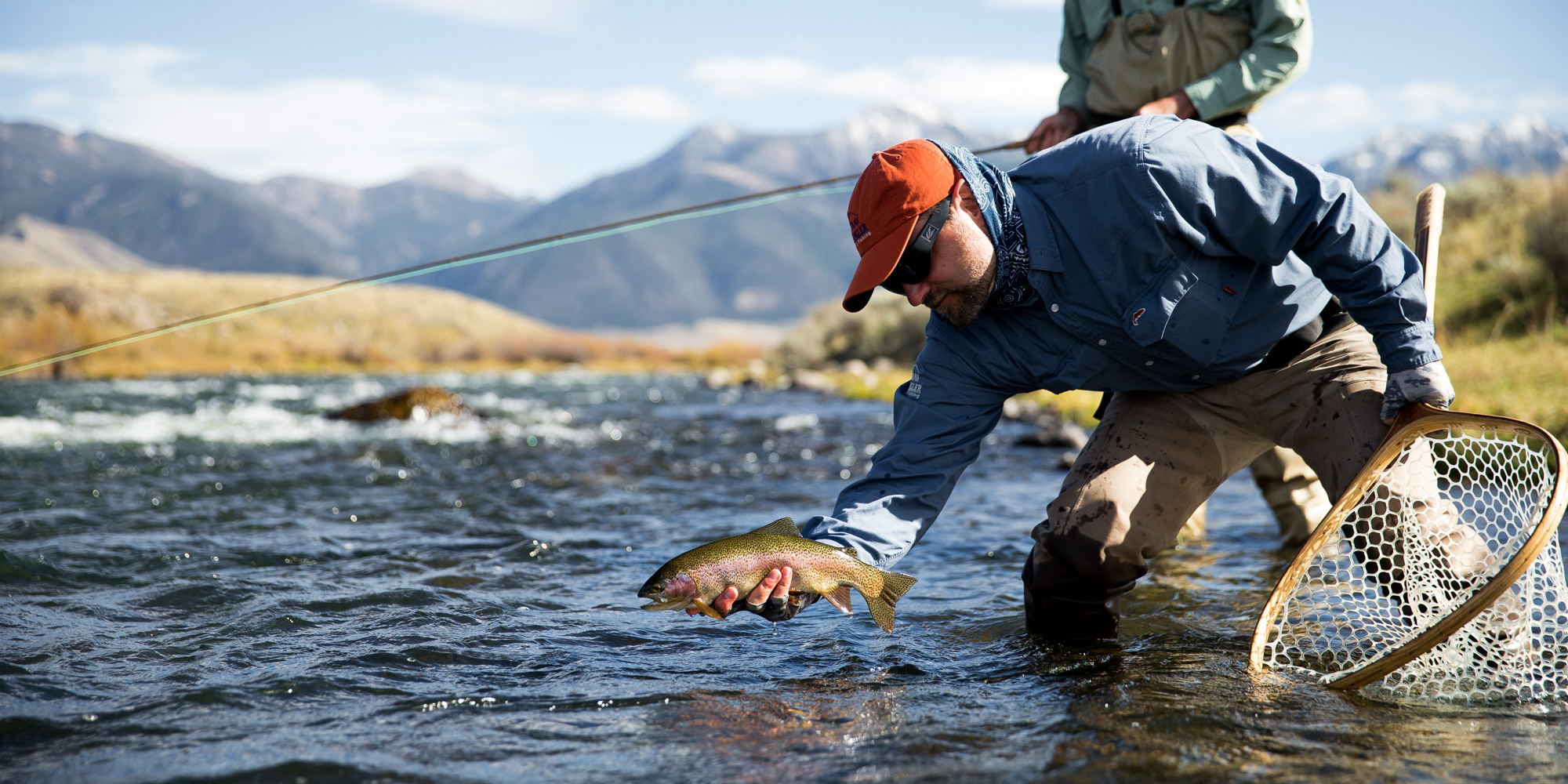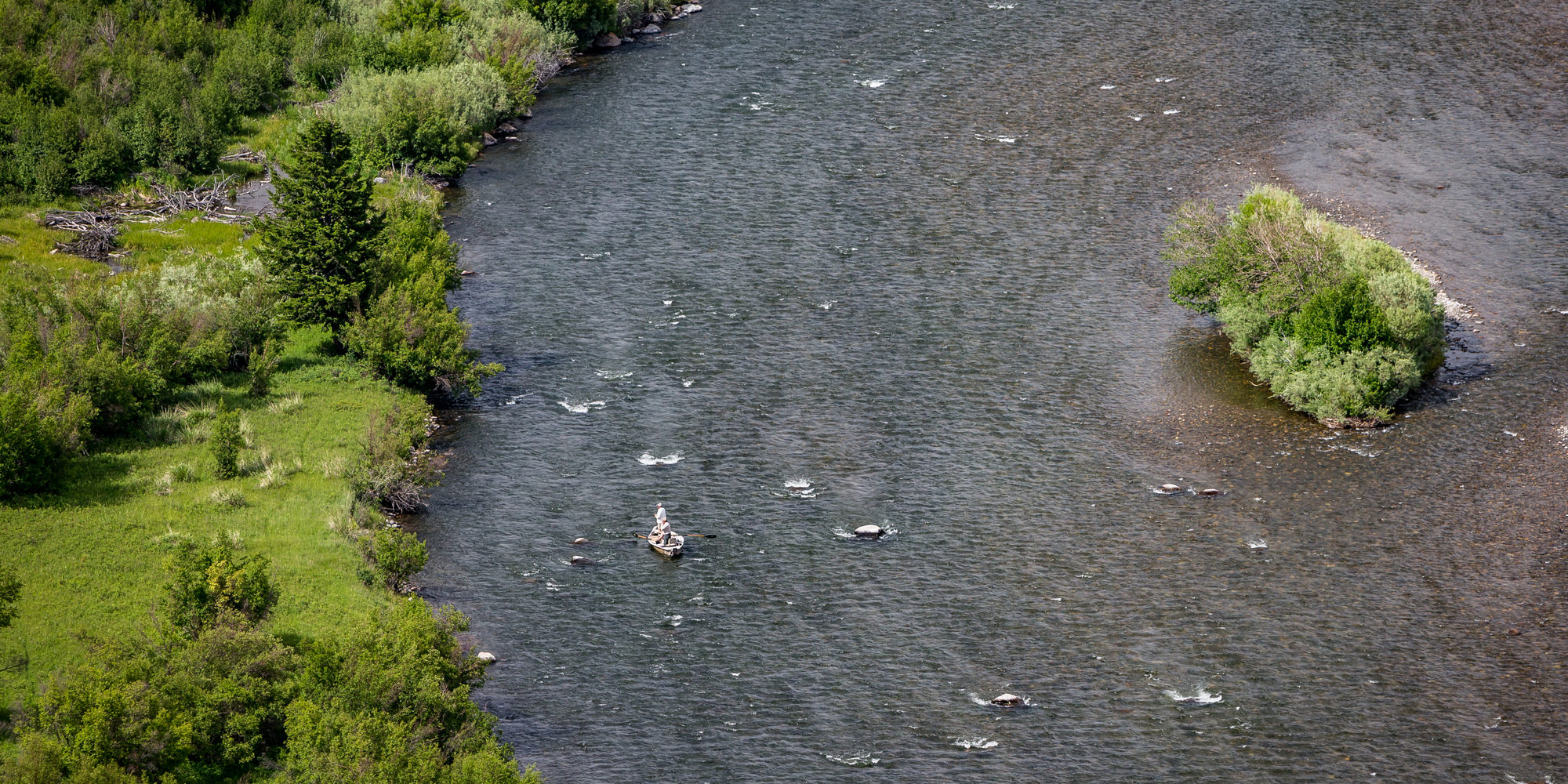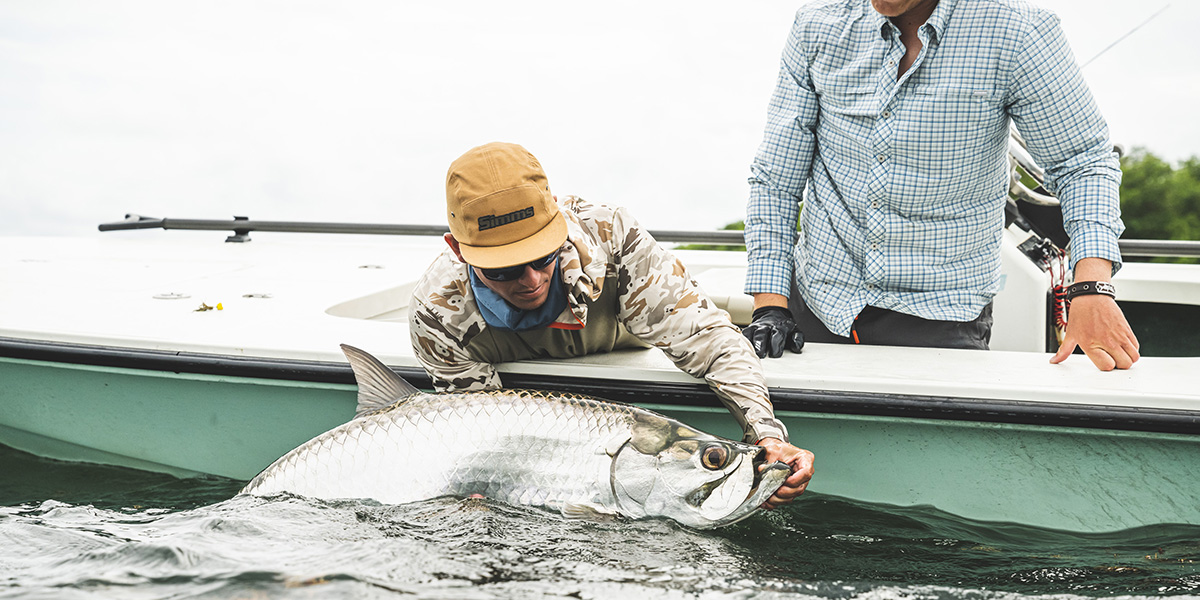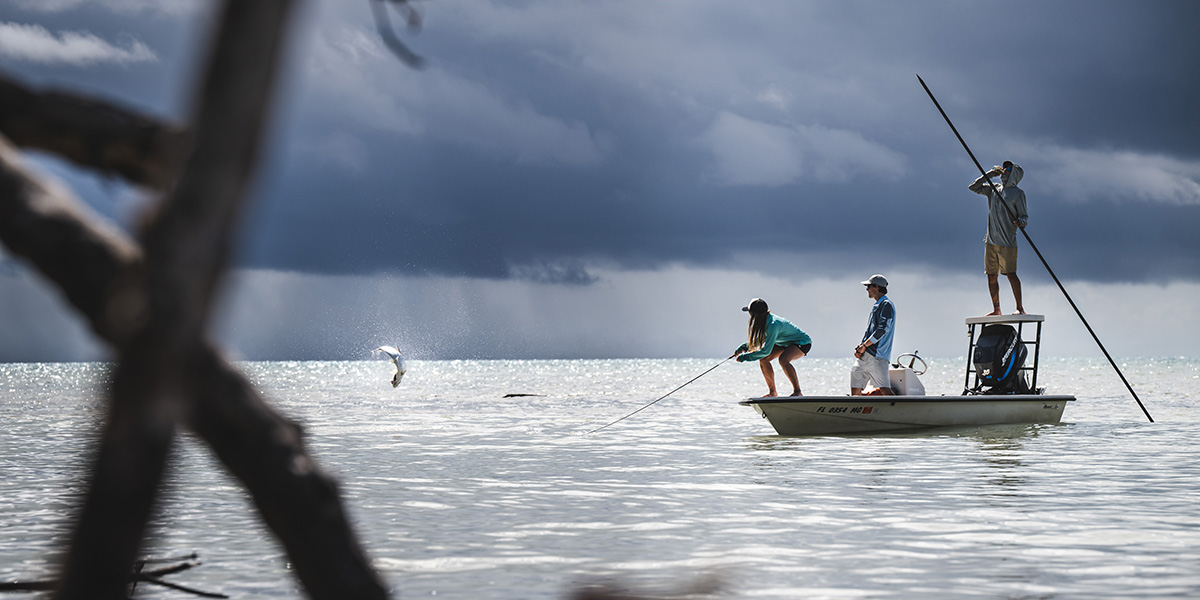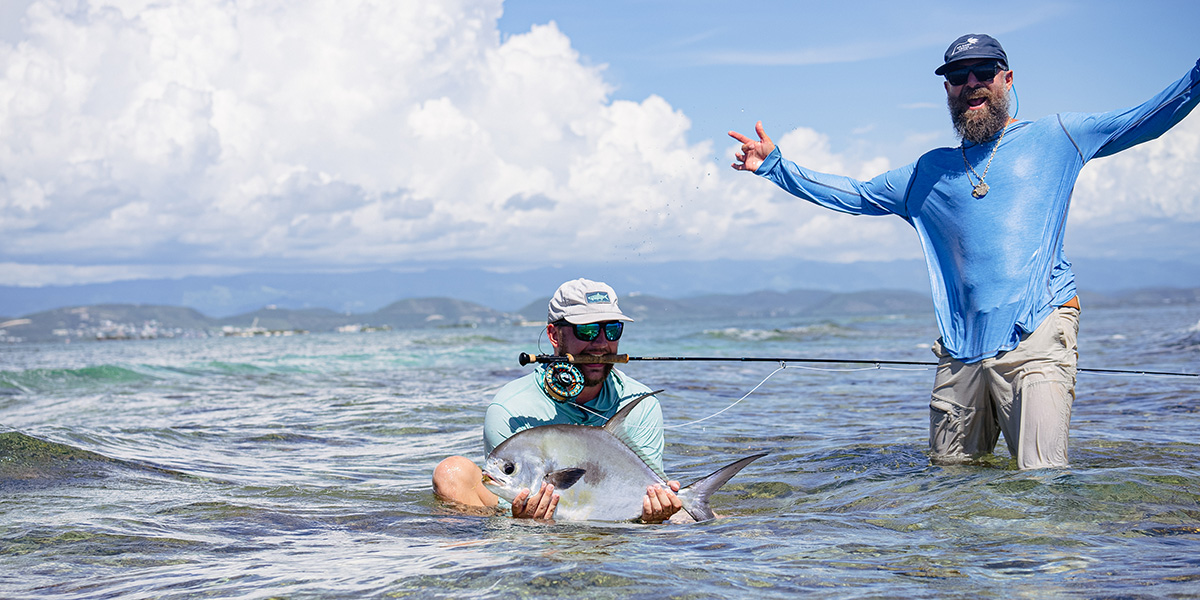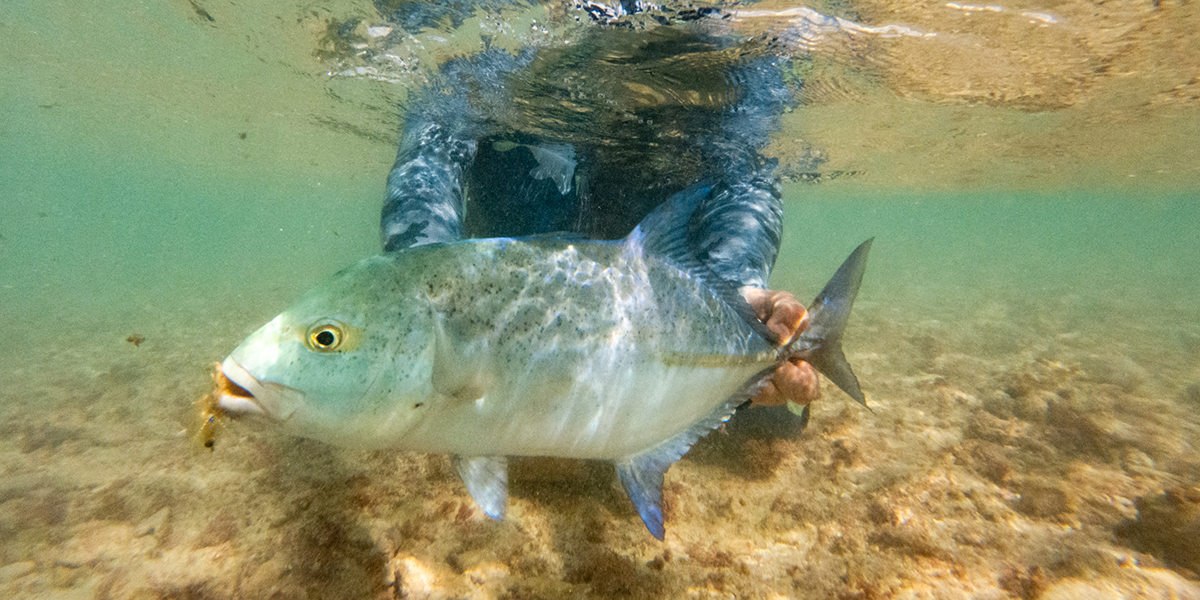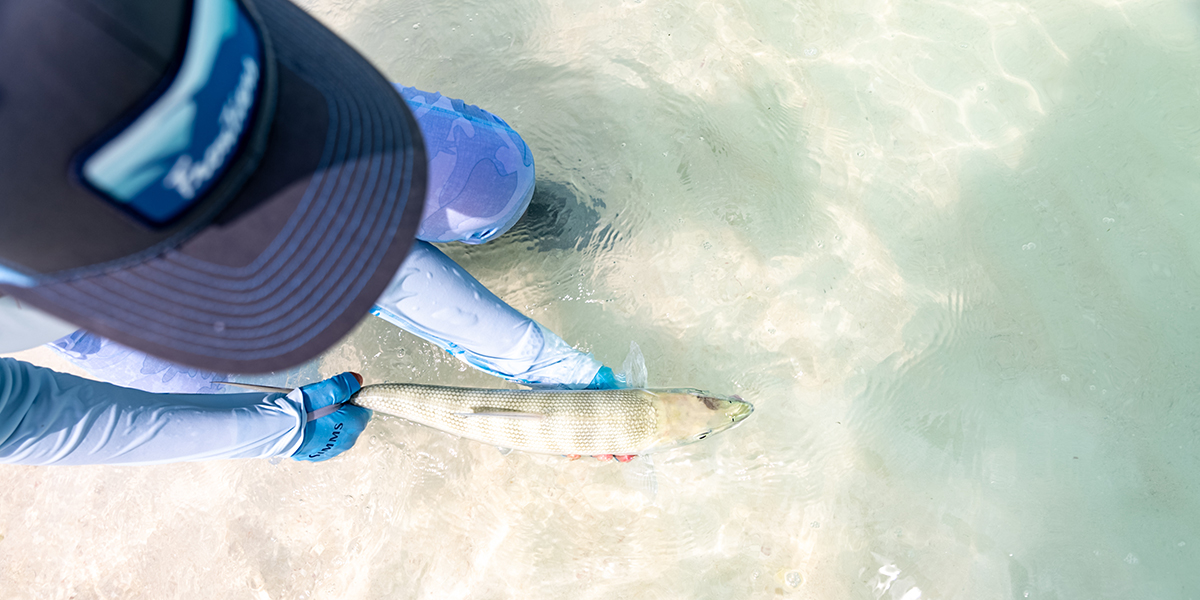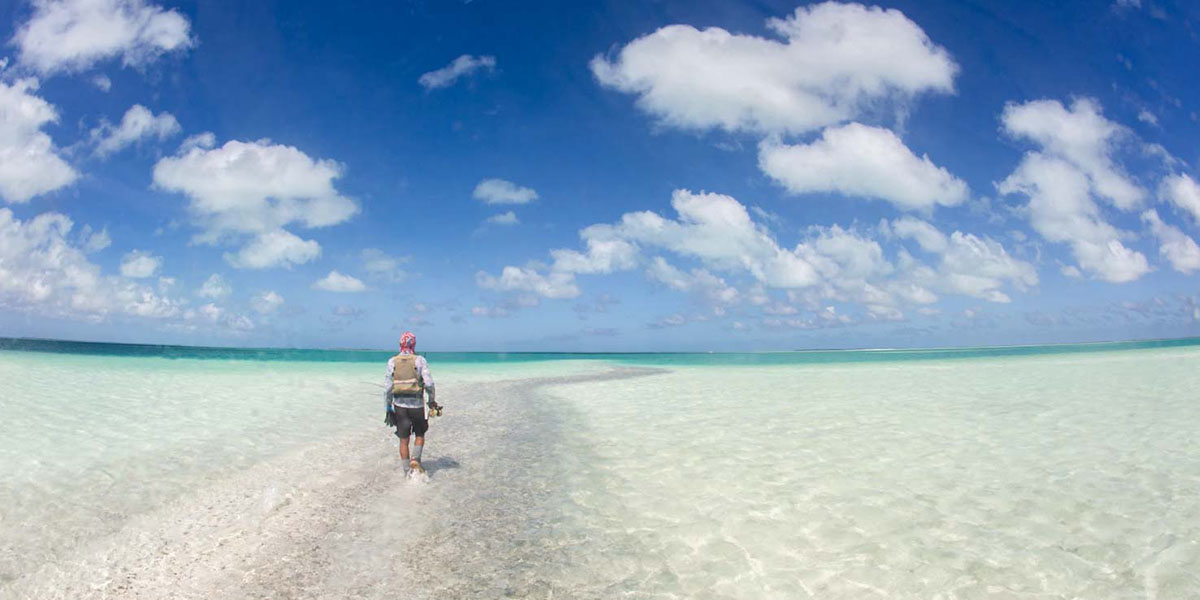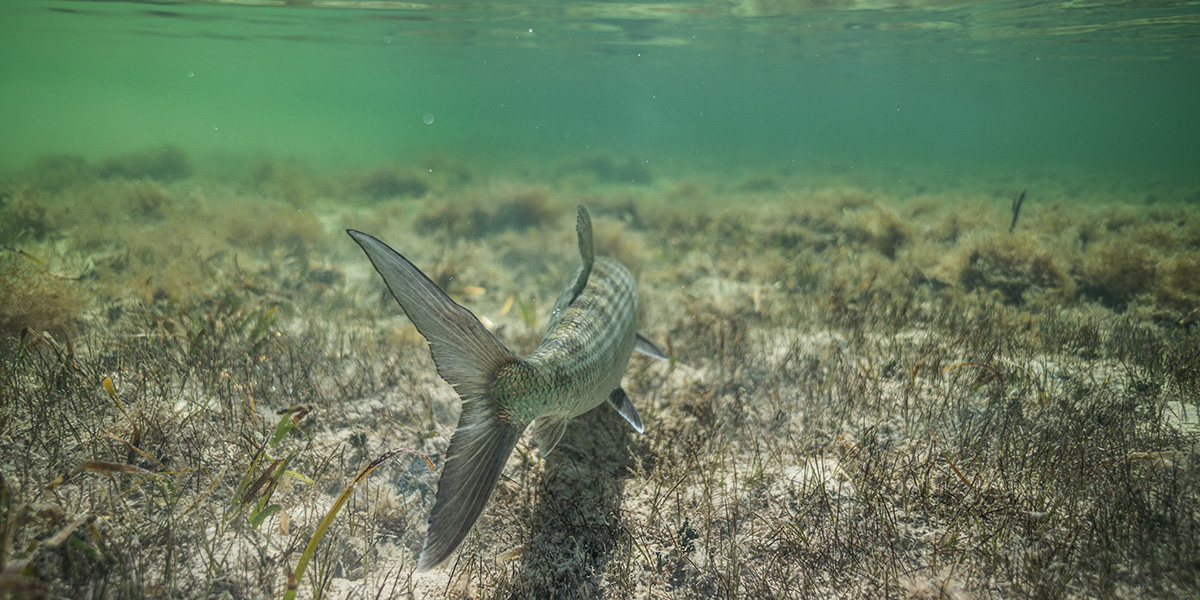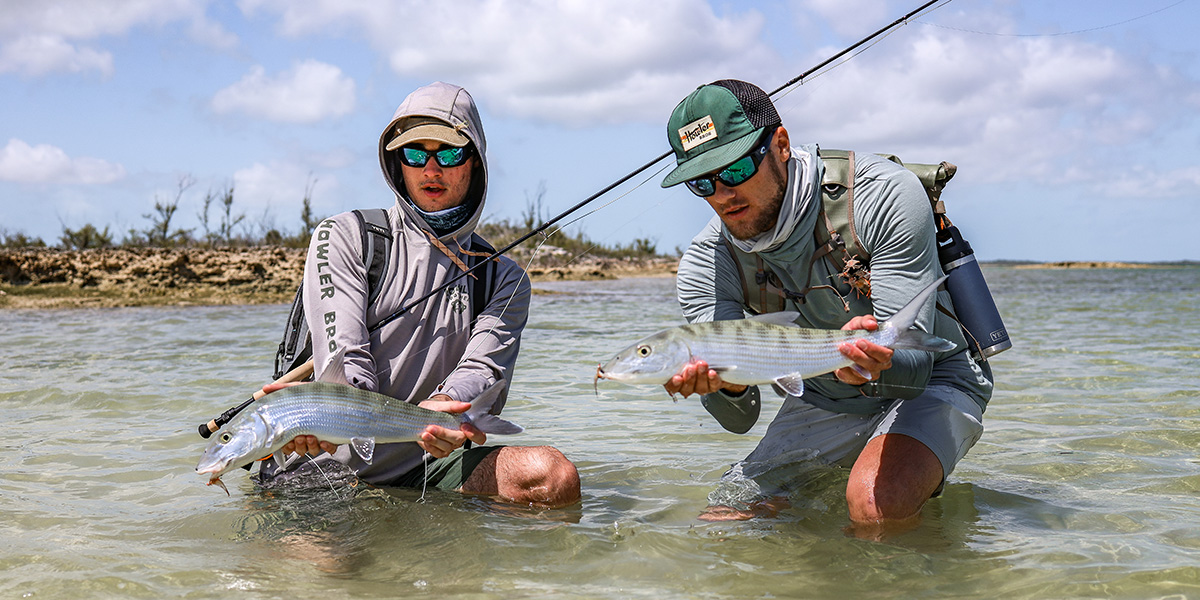Fishing for Numbers: Destinations with Strong Catch Rates by Month
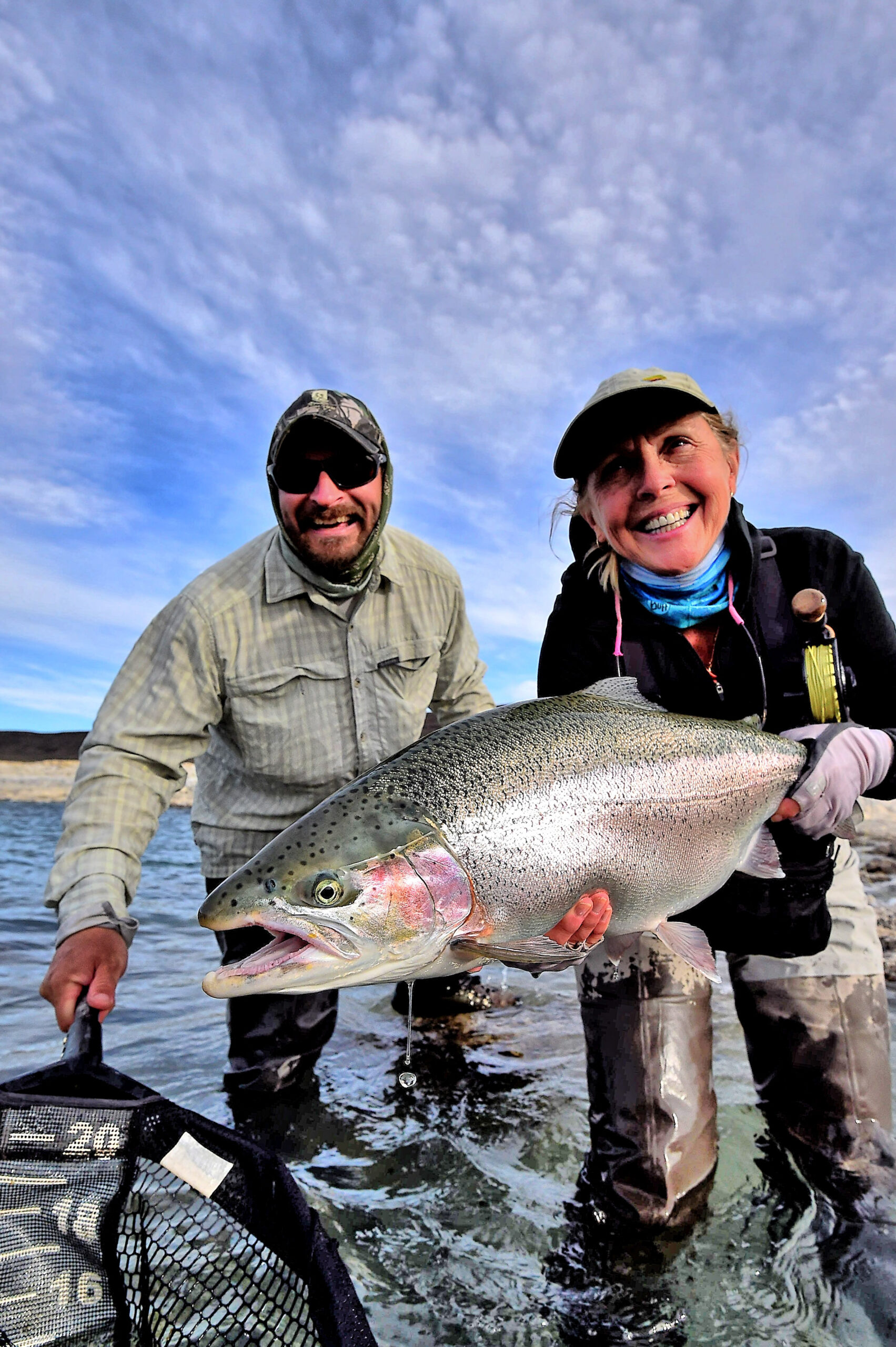
We’ve all heard, “the tug is the drug”. Cliched perhaps, but not without its truth. What fly angler hasn’t felt that shot of adrenaline and dopamine when the nose poked above the surface of the water, followed by a pair of lips, and the fly disappeared? Or when that line went tight with a grab so sudden, it slipped out of your hand? Or when a swift raise brought another bend in your fly rod, followed by a few deliberate head shakes letting you know that’s not the bottom? We’ve gathered a year’s worth of travel options featuring destinations where high catch rates, prolific species, and adrenaline-fueled days are the norm. From double-digit trout days in Patagonia to steady migrations of salmon in Alaska to massive bonefish schools in the Seychelles, these are the best fly fishing trips for anglers who prioritize numbers and fast-paced fishing. Perfect for new and experienced anglers alike who chase that cast-after-cast thrill.
It’s the kind of trip you start talking about the minute you get home. The year you caught 30 trout in a day. The “double” on bonefish that had you and your buddy each hanging onto screaming reels, with even the guide laughing in disbelief. Make those stories happen more often—put a couple on the calendar, and let the anticipation begin.
Are these destinations or style of travel not for you? Check out some of our other articles to learn how you can fish all year:
- Easy to Reach Fly Fishing Destinations
- Best Places to Catch Trout Each Month for Traveling Anglers
- Travel Destinations that are Great for New Fly Fishers
- Group Friendly Fishing: Monthly Guide to All-Inclusive Trips
- International Fly Fishing Destinations with Trophy-Sized Fish
- Remote Fishing Trips by Month: Off-the-Grid Angling Spots
- Monthly Guide to Sight Fishing Around the World
Trout on Dry Flies in Argentine Patagonia
Argentina – January
January is the peak of summer fly fishing season in Argentina, particularly in Patagonia, where strong trout populations and ideal summer conditions create excellent opportunities. With long days, warm temperatures, and abundant insect hatches, anglers can expect consistent action for wild rainbow, brown, and brook trout.
Top Regions & Rivers:
- Limay River – Known for trophy browns and rainbows, with high fish numbers in the upper and middle sections of the river.
- Chimehuín River – A legendary fishery with wild browns and rainbows eager to take dry flies and nymphs.
- Collón Curá River – Offers double-digit days, thanks to steady insect activity and aggressive trout.
- Malleo River – A dry-fly paradise where rainbows and browns rise readily to hoppers, caddis, and mayflies.
- Lago Strobel (Jurassic Lake) – Home to some of the world’s largest rainbows, with multiple 10-15 lb fish possible in a single day.
January’s mid-summer conditions keep water temperatures ideal, ensuring trout remain active and aggressive. Reliable morning hatches and peak terrestrial action in the afternoons provide excellent opportunities, with caddis, mayflies, and stoneflies keeping fish feeding throughout the day. Grasshoppers, beetles, and ants dominate the trout’s diet, while evening caddis hatches bring steady surface action. Both wade and drift fishing are productive, allowing anglers to cover diverse waters and maximize catch rates.
How Many Trout Can You Catch in a Day?
Depending on location and conditions, double-digit days are common in Patagonia during January. On productive rivers like the Collón Curá or Malleo, an angler using dry flies or nymphs can easily land 15-30 trout in a day. On stillwaters like Jurassic Lake, it’s possible to catch multiple trophy-sized fish in a single session, with some anglers landing rainbows exceeding 15 pounds throughout the day.
Contact our Expert: Ben Hoffman
Call: 1-800-245-1950
World’s Best Sailfishing by the Numbers
Guatemala – February
Over the years, Guatemala has earned and maintained the title of the world’s capital for Pacific Sailfish. The high number of opportunities, combined with the seasoned Captains and Crew experienced in fly-fishing techniques, make Guatemala our top pick for targeting Pacific sails on a fly.
Anglers visiting this region typically experience excellent sail fishing and the opportunity to target a variety of additional species. While sailfish are the primary attraction, the waters also host blue, black, and striped marlin, as well as dorado (mahi-mahi) and yellowfin tuna. The fishing grounds are conveniently located 12-40 miles offshore, allowing for short runs to productive areas.
During the high season, which typically runs from November through May, boats will typically average 15-20 billfish releases per day, with the sailfish ranging from 60-120 pounds. Multiple lodges offer comfortable accommodations, excellent service, and seasoned crews knowledgeable with the rigging, teasing, and orchestration required to fly fish successfully offshore.
Contact our Expert: Joe Koziara
Call: 1-800-245-1950
Flats Mayhem in the Seychelles
Seychelles – March
March is one of the most productive months for fly fishing in the Seychelles, offering prime sight-fishing opportunities on vast, remote flats. As the transition between the northwest monsoon and dry season, March brings stable weather, warm waters, and consistent tidal movements—perfect conditions for fish to push onto shallow sand and coral flats.
Atolls like Alphonse, Cosmoledo, and Farquhar host staggering populations of bonefish, permit, triggerfish, and giant trevally. Bonefish are especially abundant, often found in large schools on hard-bottomed flats and sandbars, allowing anglers to rack up impressive catch numbers in a single session. Unlike solitary or small pods seen elsewhere, Seychelles flats see groups of dozens—sometimes hundreds—feeding in clear, shallow water.
Alongside bonefish, March offers excellent chances to catch Indo-Pacific permit and tailing triggerfish, both actively feeding on the flats. Giant trevally patrol the surf zones and lagoon edges, adding another exciting target to the mix. While GTs present fewer shots, the sheer volume of other species means near-constant action throughout the day.
Contact our Expert: Hank Ingram
Call: 1-800-245-1950
Bonefish Action on the Target-Rich Flats of the Bahamas
Bahamas – April
April is an excellent time for sight-fishing bonefish in the Bahamas, not only for the chance to encounter quality fish but also for the sheer volume of opportunities on the flats. As water temperatures rise, bonefish become increasingly active, pushing onto the shallows in large schools. Anglers can expect to find fish tailing in skinny water early in the morning, followed by steady action throughout the day as they cruise across sand and turtle grass flats in search of food. The spring months often bring stable weather and light winds, allowing for extended fishing sessions and numerous shots at fish.
The Bahamas’ fishery is vast, stretching from the expansive sand flats of South Andros to the hard-bottomed, wadeable waters of the Joulter Cays and the Marls of Abaco. These areas hold staggering numbers of bonefish, and in many locations, it’s common to see dozens—or even hundreds—of fish moving together in schools. This makes April a prime time for anglers looking to rack up high numbers, with the potential for double-digit days when conditions align. While the spring season also offers shots at larger, solitary fish, the sheer abundance of bonefish in April provides near-constant action for those who enjoy the fast-paced challenge of sight-fishing in clear, shallow water.
Contact our Expert: Joe Linscott
Call: 1-800-245-1950
Peak Springtime Flats Fishing for Permit, Bonefish, and Tarpon in Mexico
Mexico – May
May is one of the best months to fish the shallow flats of Mexico’s Yucatán Peninsula, particularly in Ascension Bay and Chetumal Bay. Favorable conditions bring strong populations of bonefish, permit, tarpon, and snook into accessible waters, providing excellent opportunities for fly anglers.
Stable weather, light winds, and predictable tides make for ideal sight-fishing conditions. Fish are highly active in clear, shallow water, often schooling in large numbers. Bonefish and permit are especially abundant, offering multiple shots within short timeframes.
Yucatán Species Opportunities:
- Bonefish – Large schools of 2-4 lb bonefish populate the flats, allowing anglers to land double-digit numbers in a single session. Unlike in some regions, Yucatán bonefish often travel in big groups, increasing success rates.
- Permit – This region is famous for permit fishing, and May offers some of the best chances to hook one. Stable tides keep permit actively feeding on turtle grass flats and sandy lagoons, with multiple shots per day in the right conditions.
- Tarpon & Snook – Resident baby tarpon (5-30 lbs) thrive in mangrove creeks and backcountry lagoons, especially in Chetumal Bay. Snook are often found laid up in the mangroves, providing exciting sight-casting opportunities.
Contact our Expert: Ben Hoffman
Call: 1-800-245-1950
Productive Trout Fishing on Renowned Waters in Big Sky Country
American West – June
June is one of Montana’s most productive months for fly fishing, offering exceptional trout numbers on some of the West’s most famous rivers. As runoff subsides and insect hatches intensify, trout feed aggressively, creating fast-paced action. With thousands of trout per mile, strong hatches, and eager fish, anglers can enjoy some of the most exciting fishing of the year, whether using dries, nymphs, or streamers.
Why does June offer high-catch rates?
- Abundant Hatches: June kicks off some of the year’s biggest insect hatches. Salmonflies (early to mid-June on the Madison, Yellowstone, and Big Hole) bring explosive strikes from big browns and rainbows. Caddis emerge in huge numbers, especially in the evenings, while PMDs provide all-day dry-fly fishing, particularly on tailwaters. Green Drakes hatch in late June on freestone rivers, triggering aggressive takes.
- Post-Runoff Conditions (Late June): While early June may see high flows, by mid-to-late June, water levels drop and clear, creating prime conditions. Tailwaters like the Missouri and Bighorn offer consistent dry-fly and nymphing opportunities all month.
- Multiple Techniques Work: Nymphing produces big numbers early in the month, while streamers are deadly as water levels recede. As hatches intensify, dry-fly fishing dominates, especially in late June.’
How many trout can you catch in a day?
Catch rates vary greatly, but double-digit days are common on high-density rivers like the Missouri and Bighorn. On peak hatch days, skilled anglers can land 20+ trout on dry flies alone, with nymphing often producing even higher numbers.
Contact our Expert: Joe Koziara
Call: 1-800-245-1950
Sockeye, Trout, and Chum—Alaska’s Triple Threat in High Gear
Alaska – July
Historically, by the second week of July, southwest Alaska comes alive with the largest sockeye salmon runs in the world—an experience every angler should have on their bucket list. The sockeye salmon is often regarded as the strongest salmon pound-for-pound. Their powerful runs will have your adrenaline pumping as you reel in some of the toughest and most determined fish in Alaska. When the sockeye run reaches its peak, guests can only imagine the sheer numbers of fish that are readily available. You can catch dozens of fish pretty much at will if this is your ambition. Sockeye are wonderful for the table, and they don’t get any fresher than Alaska.
July is also a prime time for trout, typically caught on nymphs, streamers, and surface patterns during this period. Many of the larger trout will be found taking bugger and sculpin patterns, providing exhilarating battles on the water. The dry fly action continues to be strong well into July, with mousing as a thrilling option.
But that’s not all—mid-to-late July brings the arrival of chum salmon, often the most underrated of Alaska’s salmon species. These feisty fish might not always get the spotlight, but they pack plenty of power, and guests can catch a copious amount of these strong fish. If you’re looking for a dynamic, action-packed month on the water, July in Alaska is tough to beat.
Contact our Expert: Tom Gilliland
Call: 1-800-245-1950
Topwater Action on Cold Creeks in the Canadian Rockies
British Columbia – August
Much like summertime in the American West, August in Fernie, British Columbia, offers prime dry fly-fishing opportunities for trout anglers. In contrast to the U.S., British Columbia’s management of its fisheries and fishing pressure with limited permits helps to avoid some of the over-crowding that occurs during certain times on popular waters in the American West. August around Fernie typically has water levels stabilizing and temperatures rising, leading to terrestrial insects like ants, hoppers, and beetles becoming abundant and enticing trout to feed actively on the surface. The Elk River, renowned for its native Westslope Cutthroat Trout, provides anglers with clear waters ideal for sight-fishing. These trout are known for their willingness to rise to terrestrials and dry flies.
The region’s tributaries, such as the Wigwam and Bull Rivers, also offer excellent dry fly action during this period. The Bull River, with its cold, clear waters, sees good hatches of mayflies and caddisflies from late July to the end of August, making it a favorable time for anglers targeting these species. The combination of diverse insect hatches and the natural beauty of the Canadian Rockies makes August an exceptional time for dry fly fishing around Fernie.
Contact our Expert: Hank Ingram
Call: 1-800-245-1950
A Reliable Time for Terrestrials, Streamers & Trophy Trout Potential in Montana
American West – September
September is one of the most consistent and rewarding months for fly fishing in Montana and the American West. Unlike June, when runoff can still affect some rivers, September brings low, stable flows, clear water, and fewer anglers. While June is about aggressive post-runoff feeding and aquatic hatches, September offers technical dry fly fishing, exciting terrestrial action, and prime streamer fishing for pre-spawn brown trout.
Why does September produce high catch rates?
- Lower, clearer water for Sight-Fishing: Rivers settle into ideal flows, making it easier to spot and target trout in riffles, runs, and tailouts. Hopper-dropper rigs excel in these conditions, often leading to double-digit days.
- Big Terrestrial Fly Action: Grasshoppers, ants, and beetles dominate trout diets, making September one of the best months for big dry flies. Unlike June’s aquatic hatches, this month offers thrilling topwater eats along grassy banks and undercuts, particularly on the Madison, Yellowstone, and Missouri.
- Pre-Spawn Brown Trout Aggression: As browns prepare for their late-fall spawn, they become territorial and attack streamers. The Yellowstone, Big Hole, and Madison offer some of the year’s best chances at trophy browns over 22 inches.
- Fewer Anglers, More Productive Fishing: With the summer crowds gone, fish are less pressured and more willing to eat, leading to higher catch rates.
Contact our Expert: Joe Koziara
Call: 1-800-245-1950
Passport-Free Tarpon
Puerto Rico – October
October is one of the most productive months for targeting tarpon in Puerto Rico, offering consistent action for fly anglers. While the fishery remains active year-round, late summer and early fall see high concentrations of tarpon in shallow water, creating ideal conditions for multiple hookups per day.
Puerto Rico’s resident tarpon range from 15-pound juveniles to 70-pound bruisers, found in mangrove-lined lagoons, sheltered bays, and shallow flats. Schools of rolling fish are common in the early mornings and evenings, and with less angling pressure than other destinations, these tarpon remain aggressive and willing to eat.
Beyond tarpon, Puerto Rico’s mix of Caribbean and Atlantic waters offers exciting flats fishing, including opportunities to target permit near reef structures and wave breaks. Though challenging, the sheer number of encounters makes it a rewarding pursuit for experienced anglers.
Contact our Expert: Joe Koziara
Call: 1-800-245-1950
An Expansive Flats Fishery at the Remote South Pacific Atoll of Kiribati
Christmas Island – November
November is an interesting month for anglers, especially those who call the United States home. In many waters around the country, trout fishing has subsided from summer and fall action. Meanwhile, saltwater anglers have to consider the tail-end of hurricane season around the Gulf and Caribbean. For those of us who still want to get after some quality fishing, where should an angler travel? Consider Kiribati and Christmas Island, located between Hawaii and Fiji in the South Pacific. Its equatorial location ensures consistent conditions year-round, but November brings optimal tides, warm water, and excellent sight-fishing opportunities.
The island is renowned for its expansive flats and lagoons with bonefish, trevally, triggerfish, and other species providing a range of options and opportunities for memorable action at any point in the day. Christmas Island hosts one of the largest bonefish populations in the world, with schools flooding the flats in staggering numbers during various stages of the tide. Large schools are possible, and double-digit days are not uncommon.
Trevally add another level of excitement, with opportunities to target giant trevally (GTs) on the fly and frequent encounters with bluefin and golden trevally. Christmas Island’s clear, shallow waters and reef-side flats present consistent chances to sight-cast to tailing triggerfish—an elusive but rewarding target.
Contact our Expert: Lisa Kiley
Call: 1-800-245-1950
Big Bonefish Numbers in Skinny Water on the Prolific Flats of the Bahamas
Bahamas – December
October, November, and December offer some of the best opportunities for targeting large bonefish in the Bahamas. With reduced angling pressure and active fish, these months provide excellent sight-fishing conditions. As summer transitions to fall, cooling water temperatures create more comfortable conditions for larger bonefish to move onto the flats, allowing them to feed in shallow water for longer periods. Unlike the hot summer months, when big fish retreat to deeper, cooler areas, fall provides extended opportunities to target them where they are most accessible.
Post-spawning behavior also contributes to the presence of larger fish on the flats. After spawning offshore in late spring and summer, bonefish return to shallower waters, resuming their regular feeding patterns. The abundance of small crustaceans, shrimp, and baitfish during this season makes the flats particularly productive, as bonefish actively forage in skinny water. Additionally, with many anglers focusing on bonefish in the spring and early summer, fall offers less pressure, making larger, more cautious fish more willing to feed in shallow areas. While tropical storms can temporarily disrupt fishing, they also stir up the flats, redistributing nutrients and attracting prey, often improving conditions once the weather stabilizes.
Grand Bahama Island is renowned for its trophy-sized bonefish, averaging 4-5 pounds, with regular encounters with fish in the 7-8 pound range. Its proximity to the U.S. makes it an accessible and rewarding destination. Similarly, South Andros Island offers exceptional wading opportunities, with schools of 3-5 pound bonefish and frequent sightings of larger fish, including those in the double-digit class. With favorable conditions, fewer crowds, and outstanding fishing, fall and early winter are prime seasons for bonefishing in the Bahamas.
Contact our Expert: Joe Linscott
Call: 1-800-245-1950




